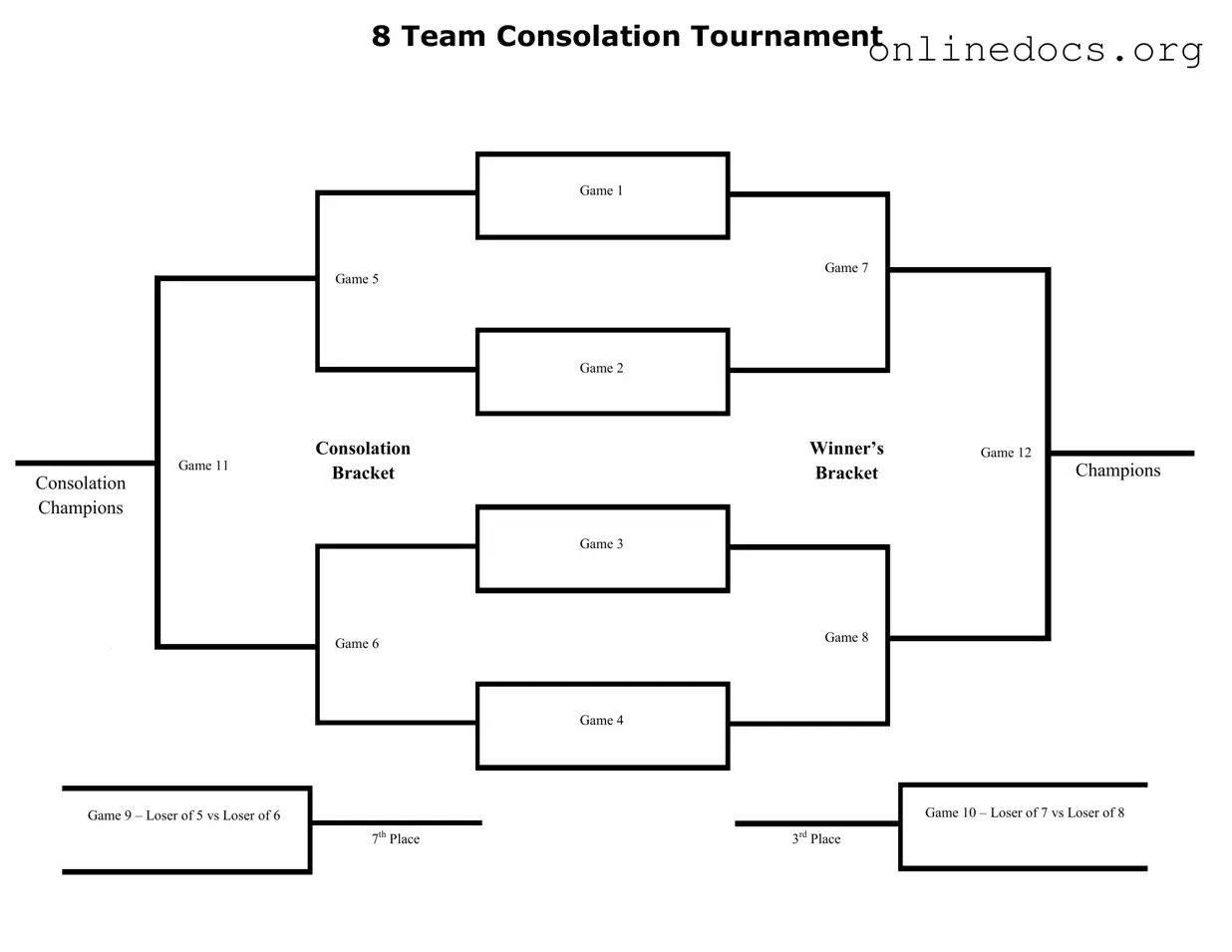When filling out the Tournament Consolation Bracket form, individuals often overlook important details that can lead to confusion or errors. One common mistake is failing to clearly indicate the teams participating in each game. Without proper identification, it becomes difficult to track the progress of the tournament.
Another frequent error involves incorrect game numbering. Participants may skip numbers or repeat them, which can disrupt the flow of the bracket. This mistake can lead to misunderstandings regarding which teams are playing and when.
Inaccurate placement of teams in the bracket is also a notable issue. Teams should be placed according to their performance in prior games. Misplacing a team can result in an unfair advantage or disadvantage, affecting the integrity of the tournament.
Some individuals neglect to update the bracket after each game. Failing to record the outcomes promptly can create confusion for players and spectators alike. Keeping the bracket current is essential for maintaining clarity throughout the tournament.
Additionally, using unclear or illegible handwriting can hinder the understanding of the bracket. If the information is not easily readable, it may lead to misinterpretation of game results or team names.
Participants sometimes forget to designate the consolation champions. This oversight can lead to ambiguity regarding which team ultimately wins the consolation bracket, leaving out a crucial aspect of the tournament.
Another mistake is not following the specified format for filling out the form. Each tournament may have unique requirements, and failing to adhere to these can result in the form being rejected or deemed invalid.
Lastly, individuals may neglect to double-check their entries before submitting the form. A simple review can catch errors that could impact the overall organization of the tournament. Ensuring accuracy can help facilitate a smooth and enjoyable experience for all involved.
